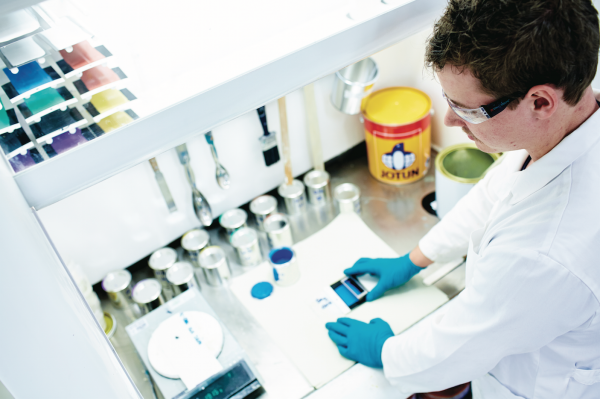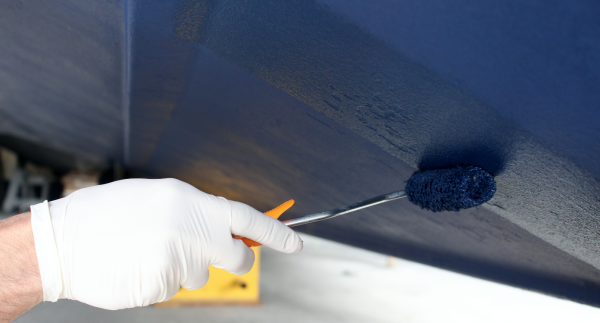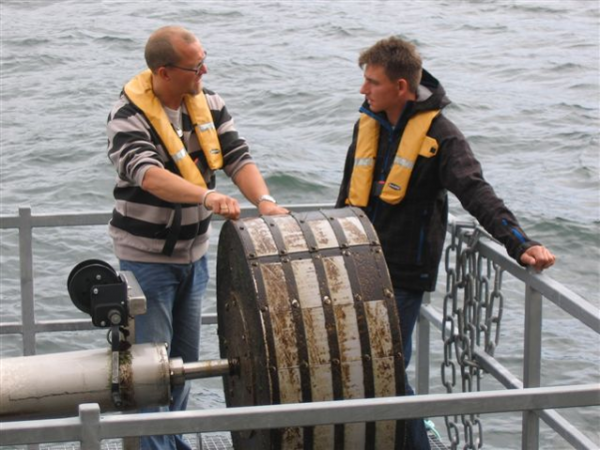Superyacht antifouling – is the future in doubt?
Antifouling R&D is pushing technological boundaries, but are new biocide regulations threatening the future of superyacht antifouling?
When it comes to battling fouling on yacht hulls, it could be said that mankind has a bit of a disadvantage compared to nature. While barnacles and other marine organisms have had millions of years to perfect their mechanisms, we have only been evolving our countermeasures for less than a century. However, modern labwork and R&D methodologies are making huge strides in improving the potency, efficacy and environmental fallout of antifouling products, from polymer binder design to the biocide content and overall formulation.
Indeed, modern research techniques are going high-tech. “We can use computer systems to work on and generate proposals based on experience by iteration and trying different options, and then give us advice,” says Petter Andreassen, antifouling R&D department manager, Yachting at Jotun. “We can actually put into the computer that we would like to change five different parameters. For us, that would be too many variables to adjust at once, but the computer can think and test out and come up with a test plan.“
Beyond current biocidal formulations, paint companies are also busy investigation next-generation technologies that could eliminate the need for biocides altogether. Of course, getting any specific information from the research chemists proves somewhat challenging. “I think this is an area where we obviously can’t give specific examples,” says Sharon Sheerin, R&D section manager at International Paint at Akzonobel. “But I think from a high-level point of view, we are always looking out for, and evaluating, potential innovative solutions for our customers. As part of that we have to consider the legislative landscape of which we have a view for the next five to 10 years – we analyse the trend from where it’s come from and where it could potentially go in order to develop innovative solutions.”
But while research into improving antifouling products and investigating future antifouling technologies continues apace, there remains a dark cloud over the entire area as it presently stands. It stems from the EU’s Biocidal Products Regulation (BPR) which is seeking to harmonise and approve all biocides including those used in the formulation of antifoulings. While there has been some good news – copper and its derivatives have been cleared, in spite of rumours over the past few years that they would be banned – there has also been much confusion over the classification of different types of vessel.
As it currently stands, it is likely that vessels classified as recreational craft – leisure boats, in other words – will be subject to far stricter biocide regulation than commercial or so-called ‘sea-going’ vessels. The key factor effecting our industry is where superyachts will fall in this categorisation – as ‘recreational’ or ‘commercial’ craft – which could directly impact the efficacy and strength of antifoulings that can be used on our growing fleet. “What we call the biocide toolkit has certainly diminished in recent years,” says Scott Thompson, R&D section manager at AkzoNobel Yacht Coatings. “There are big changes in Europe at the moment because of the BPR.”
“It’s a very depressing situation with regards pleasure craft, and it’s only getting worse, month by month, because they have to take a harmonised approach for pleasure craft,” says Kjersti Fjelde, senior regulatory affairs specialist, group product safety at Jotun. “To be honest, nobody knows what the future for pleasure-craft antifoulings is for Europe. The authorities are still drafting and drafting.”
However, while the decision from the EU over the classification of superyachts is still pending (at the time of publishing this story) there have been a couple of encouraging moves from individual EU member countries that might give grounds for hope. “I haven’t seen anything new from the EU yet,” says Fjelde, “but The Netherlands recently published an updated evaluation manual for their national approval of biocidal products.” That manual states that ‘All recreational crafts with a hull length of 24 meter or more are categorized as commercial vessels. Ctgb Board decision C-296.1.6, December 2016’.
Perhaps this signals the intent of the EU itself, and if it does then the future of superyacht antifouling could be secure – and not before time. “It has given me some sleepless nights,” Fjelde admits. “Superyacht antifoulings have been in limbo for a couple of years.”
Images courtesy of Jotun.
A more in-depth look at antifouling technology and the impact of the impending biocide regulations appears in issue 178 of The Superyacht Report.
Have you subscribed to The ‘new’ Superyacht Report? If you are a captain, owner, yacht manager, chief engineer, first officer, broker, designer, senior shipyard management, an owner’s representative, investor, or a family office, you are eligible for a complimentary annual subscription to the only superyacht industry publication worth reading. To apply for your VIP subscription, click here.
Profile links
NEW: Sign up for SuperyachtNewsweek!
Get the latest weekly news, in-depth reports, intelligence, and strategic insights, delivered directly from The Superyacht Group's editors and market analysts.
Stay at the forefront of the superyacht industry with SuperyachtNewsweek
Click here to become part of The Superyacht Group community, and join us in our mission to make this industry accessible to all, and prosperous for the long-term. We are offering access to the superyacht industry’s most comprehensive and longstanding archive of business-critical information, as well as a comprehensive, real-time superyacht fleet database, for just £10 per month, because we are One Industry with One Mission. Sign up here.
NEW: Sign up for
SuperyachtNewsweek!
Get the latest weekly news, in-depth reports, intelligence, and strategic insights, delivered directly from The Superyacht Group's editors and market analysts.
Stay at the forefront of the superyacht industry with SuperyachtNewsweek







